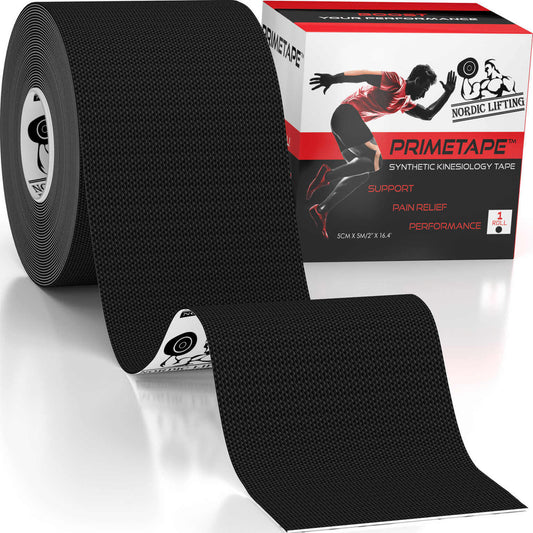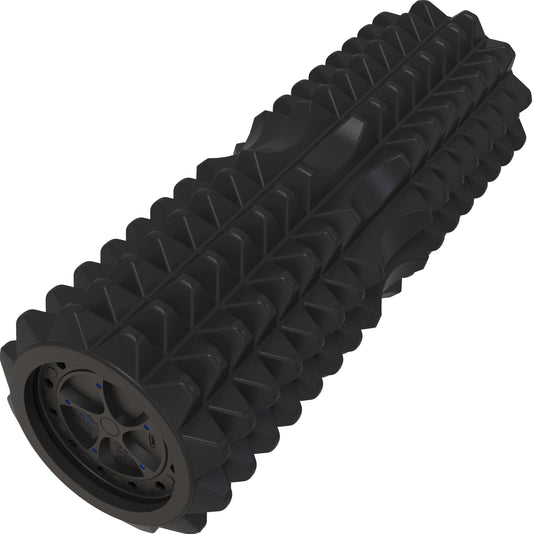Last Updated: February 7, 2025
For many, the idea of bodybuilding after age 40 raises questions about safety and effectiveness. Bodybuilding can be safe and beneficial for individuals over 40, improving muscle mass, bone density, and overall health. With the right training approaches and attention to nutrition, older athletes can build strength while mitigating risks associated with aging.
As the body ages, it can respond differently to exercise. However, with a focus on proper techniques, gradual progress, and recovery strategies, individuals can successfully navigate this journey. Strength training also plays a significant role in promoting mental health, offering not just physical benefits but also emotional resilience.
Key Takeaways
- Bodybuilding enhances muscle mass and bone density after 40.
- Proper nutrition and recovery are crucial for injury prevention.
- Strength training supports overall health and mental well-being.
Understanding the Physiology of Aging
Aging impacts muscle mass and bone density significantly. Key changes in the body during this time include muscle loss due to sarcopenia and changes in metabolism and hormones. These factors can affect overall health and fitness levels in individuals over 40.
Effects of Sarcopenia and Osteoporosis
Sarcopenia is the gradual loss of muscle mass and strength that occurs with age. This condition can start as early as the 30s and accelerates after 50. The loss of muscle affects not only physical strength but also overall mobility and balance.
In parallel, osteoporosis affects bone density, increasing the risk of fractures and injuries. As bones become less dense, individuals may find their risk of falls and breaks rises. Both conditions emphasize the importance of strength training and nutrition to mitigate muscle loss and support bone health.
Metabolism and Hormonal Changes
Metabolism slows down with age, impacting how the body processes food and burns calories. This change can lead to weight gain if dietary habits remain unchanged.
Hormonal changes also play a significant role. Testosterone levels in men and estrogen levels in women decrease, affecting muscle repair and growth. These changes can lead to unwanted body composition shifts and may complicate efforts to maintain or gain muscle. Understanding these factors is crucial for developing effective training and nutrition strategies.
Training Strategies for Mature Athletes
When it comes to effective training for mature athletes, specific strategies can enhance performance and safety. These strategies focus on adapting workout routines, incorporating compound movements, and emphasizing balance and mobility.
Adapting Your Workout Routine
Mature athletes should tailor their workout routines to suit their changing bodies. This often means opting for lighter weights and higher reps. Using lighter weights helps reduce the risk of injury while still promoting muscle building.
Training volume should be adjusted as well. Fewer sets with sufficient rest between can promote recovery. It’s crucial to maintain proper form at all times. This can be achieved by focusing on the technique rather than the amount of weight lifted. Consistency in training is key, ensuring that the body has time to adapt and grow stronger.
Incorporating Compound Movements
Compound movements are essential for mature athletes. These exercises engage multiple muscle groups, maximizing efficiency and strength. Examples include squats, deadlifts, and bench presses.
These movements not only build strength but also improve balance and stability. They promote functional fitness, helping daily activities become easier. Athletes should focus on maintaining proper form to minimize injury risk. Starting with moderate weights allows for correct technique before gradually increasing resistance.
Balance and Mobility Workouts
Incorporating balance and mobility workouts is significant for maintaining overall fitness. Such exercises can enhance core strength and joint stability, reducing the risk of falls and injuries.
Activities like yoga and Pilates are excellent for improving flexibility and balance. Adding specific movements, such as lunges or single-leg stands, helps develop stability. Including these workouts in a weekly routine fosters a well-rounded approach to fitness and complements strength training.
Nutrition and Recovery for Optimal Results
Proper nutrition and recovery practices are crucial for anyone over 40 looking to build muscle safely and effectively. Focusing on adequate protein intake, hydration, and appropriate rest can lead to better muscle growth and recovery outcomes.
Protein Intake and Muscle Repair
Protein plays an essential role in muscle repair and growth. Adults over 40 should aim for about 1.25 grams of protein per pound of body weight each day. This can help support muscle synthesis and recovery after workouts.
Incorporating high-quality protein sources like lean meats, fish, eggs, legumes, and dairy can help achieve this goal. Moreover, spreading protein intake throughout the day, instead of consuming it all in one meal, optimizes muscle repair.
Using protein supplements can be helpful, especially if dietary intake is challenging. Whey protein shakes, for example, can be a quick and effective option post-workout.
Hydration and Nutrient Timing
Staying properly hydrated is vital for optimal performance and recovery. Water aids in nutrient transport and helps regulate body temperature. Aiming for at least 64 ounces of water daily is a good starting point, though needs may vary based on activity levels and climate.
Nutrient timing also matters. Consuming a mix of protein and carbohydrates within 30 minutes post-workout can enhance recovery. This helps replenish glycogen stores and kickstart muscle repair. Snacks like a banana with Greek yogurt can be a great choice.
During workouts, sipping water or a sports drink can help maintain hydration levels and support performance.
Rest and Recovery Considerations
Adequate rest and recovery are as important as nutrition for muscle growth and overall health. Getting quality sleep should be a priority; aiming for 7-9 hours per night helps the body recover effectively. Sleep supports hormone production, like growth hormone, which is vital for repair and muscle growth.
Incorporating active recovery techniques, such as light stretching or walking on rest days, can reduce muscle soreness and improve blood flow. Managing stress is also key, as it can impact recovery.
Practice relaxation methods such as yoga or meditation, as they can enhance overall well-being and sleep quality.
Safeguarding Against Injuries and Overtraining
Efficient training involves more than just lifting weights. Focusing on warm-ups, training volume, and recognizing signs of overtraining are essential to safeguard against injuries.
Warm-Ups and Injury Prevention Tactics
A proper warm-up is crucial for preparing the body for intense workouts. It increases blood flow to the muscles, enhancing mobility and reducing the risk of injury. A warm-up should include dynamic movements like arm circles, leg swings, and gentle squats.
Specifically, when preparing for heavy lifts like the deadlift, squat, and bench press, starting with lighter weights allows the body to adjust. Incorporating mobility exercises can enhance joint health and flexibility. Following this routine consistently prepares the muscles for the demands of weightlifting, lowering the chances of strain or injury during workouts.
Understanding and Managing Training Volume
Managing training volume is important to prevent overtraining and injuries. This includes the total amount of weight lifted, sets, and repetitions performed during workouts. It’s wise to gradually increase volume—often known as progressive overload—while paying attention to individual limits.
For example, an athlete might start with three sets of eight repetitions of a squat and increase gradually as strength improves. This approach helps maintain workout performance without overwhelming the muscles. Monitoring recovery time is also critical; too much volume without adequate rest can lead to muscle loss and increased injury risk.
Recognizing Signs of Overtraining
Overtraining occurs when the body has not fully recovered from previous workouts. Key signs include fatigue, irritability, decreased performance, and persistent soreness. Athletes should listen to their bodies and take rest days when needed to support recovery.
Paying attention to these signals is crucial. Ignoring them may lead to injuries that can sideline an athlete for weeks. Proper rest allows muscles and tissues to repair, preventing long-term setbacks. Maintaining balance in training and recovery enhances overall health and fitness while keeping injury risks low.
Frequently Asked Questions
There are important considerations for individuals over 40 who are interested in bodybuilding. Understanding safety precautions, workout plans, and associated risks can support effective muscle building for this age group.
What are the recommended safety precautions for individuals over 40 starting bodybuilding?
Individuals over 40 should consult a healthcare provider before beginning any fitness program. Warming up properly and using proper form during exercises is crucial to prevent injuries. Wearing supportive gear and starting with lighter weights can help minimize strain on the body.
Can females build muscle effectively after the age of 40, and if so, how?
Yes, females can build muscle after 40. Focusing on a balanced diet rich in protein and engaging in resistance training exercises can promote muscle growth. Consistency, along with proper rest and recovery, plays a key role in achieving results.
What are the recommended supplements for individuals over 40 looking to build muscle?
Common supplements include protein powders to support muscle repair and growth. Creatine can improve strength and endurance, while omega-3 fatty acids may help reduce inflammation. It's best to consult a healthcare provider before starting any new supplements.
What does a typical workout plan for a male over 40 involve for muscle building?
A typical workout plan includes strength training at least 3 times a week. It should incorporate compound movements like squats and bench presses. Including flexibility and balance exercises can enhance overall fitness and reduce the risk of injury.
What are the potential risks of bodybuilding for those who begin after 40?
The main risks include the potential for sprains, strains, and joint issues. Older adults may have slower recovery times, increasing the chance of injury if not cautious. It's important to listen to the body and rest when necessary.
How often should individuals over 40 engage in weightlifting for optimal results?
Individuals over 40 should aim to lift weights at least 2 to 3 times a week. This frequency allows for muscle growth while giving enough time for recovery. Incorporating rest days is essential to prevent overtraining.












